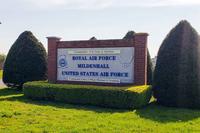CAMP DENALI, Alaska -- The 11th Air Force Rescue Coordination Center is working around the clock to lead search-and-rescue efforts, calling in multiple agencies, including the Alaska Air National Guard, to assist in three separate missions since Oct. 14.
The first mission the RCC opened was in response to an overdue Super Cub that was last seen early morning Oct. 13 at the Soldotna Airport. The pilot was flying his aircraft from Soldotna to Wolf Lake, near Wasilla, but never made it to his destination, according to officials.
The RCC tasked the Kenai Civil Air Patrol on Oct. 14 to search the departure area around Soldotna, but Civil Air Patrol members were unable to locate his aircraft. Since then, the Alaska Air National Guard and Civil Air Patrol units from Anchorage, Joint Base Elmendorf-Richardson, Birchwood and Seward have joined in the search efforts, flying grid patterns over the pilot's flight path to look for signs of his aircraft.
The search has focused on three areas: the pilot's last known point in Soldotna, the destination at Wolf Lake and the flight path in between the two points. The RCC has also coordinated efforts with the Alaska State Troopers to follow leads that may help with the search. Weather conditions have hampered search efforts, but Civil Air Patrol units from Anchorage, Elmendorf and Birchwood are still searching.
The RCC was notified of a second mission by Alaska State Troopers Oct. 15 at 8 p.m. The request was for medical assistance to treat a man with a gunshot wound to the chest at Hiline Lake.
According to the RCC officials, Alaska State Troopers were unable to execute the mission with its helicopter because there was no crew available. LifeMed Alaska, an air ambulance provider, declined the mission because the weather was below its standards for flying.
The RCC alerted the Alaska National Guard's 210th and 212th Rescue Squadrons, and following a situation brief, they launched an HH-60 Pave Hawk helicopter at 9:25 p.m. with two Alaska State Troopers onboard because of the unknown circumstances surrounding the incident and remote nature of the location.
Arriving on scene at 10:07 p.m., the Guardian Angels performed life saving measures to treat the man. They continued these efforts as they loaded him onto the Pave Hawk and throughout the flight to an Anchorage hospital.
They arrived at the hospital at 11:30 p.m. where he was released to medical personnel.
During the same timeframe, RCC officials said they were contacted again by the Federal Aviation Administration to search for an overdue pilot flying a C-1A twin-engine cargo aircraft. The pilot was reported overdue by co-workers after he was scheduled to deliver supplies from Wasilla to Nixon Fork Mine.
The same 210th Rescue Squadron flight crew that had just finished the rescue at Hiline Lake was tasked and began their search at 1 a.m. Oct. 16, searching along the expected flight path using night-vision goggles.
With no flight plan filed by the pilot, RCC officials said the crew was unable to find any sign of the aircraft and returned to Elmendorf after two hours of searching.
At 8 a.m. Oct. 16, the Alaska Air National Guard's 211th Rescue Squadron was tasked by the RCC to continue the search with an HC-130 aircraft. According to RCC officials, the equipment onboard the HC-130 has advanced electronic search equipment that allows it to pick up weak electronic signals and hone in on them.
After hours of searching, the Alaska guardsmen on the HC-130 located a crash site in the vicinity of Skwentna. After circling over the suspected location, the crew obtained visual identification of the plane that matched the description of the aircraft.
The RCC immediately tasked the Alaska Air National Guard's 210th Rescue Squadron with 212th Rescue Squadron Guardian Angels onboard to respond to the crash site. Once on scene, the Guardian Angels were lowered from the HH-60 Pave Hawk helicopter via hoist into a wooded area that contained the site.
Guardsmen identified the single occupant pilot, who was deceased, officials said. The RCC transferred control of the mission to Alaska State Troopers and the National Transportation Safety Board.
Both aircraft reported overdue are equipped with older 121.5 MHz beacons. According to RCC officials, if the pilots had installed the newer 406 MHz beacon, their ability to locate the aircraft would be much faster because they could use satellites to hone in on their location.























